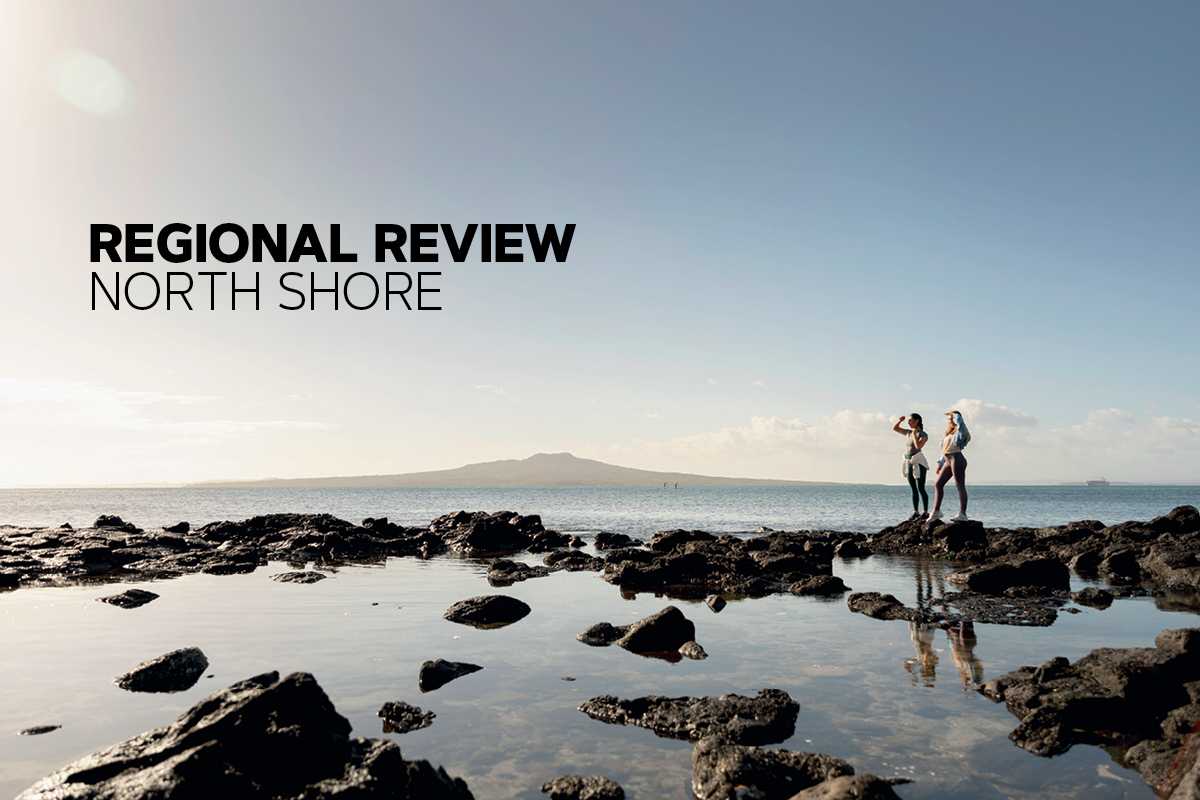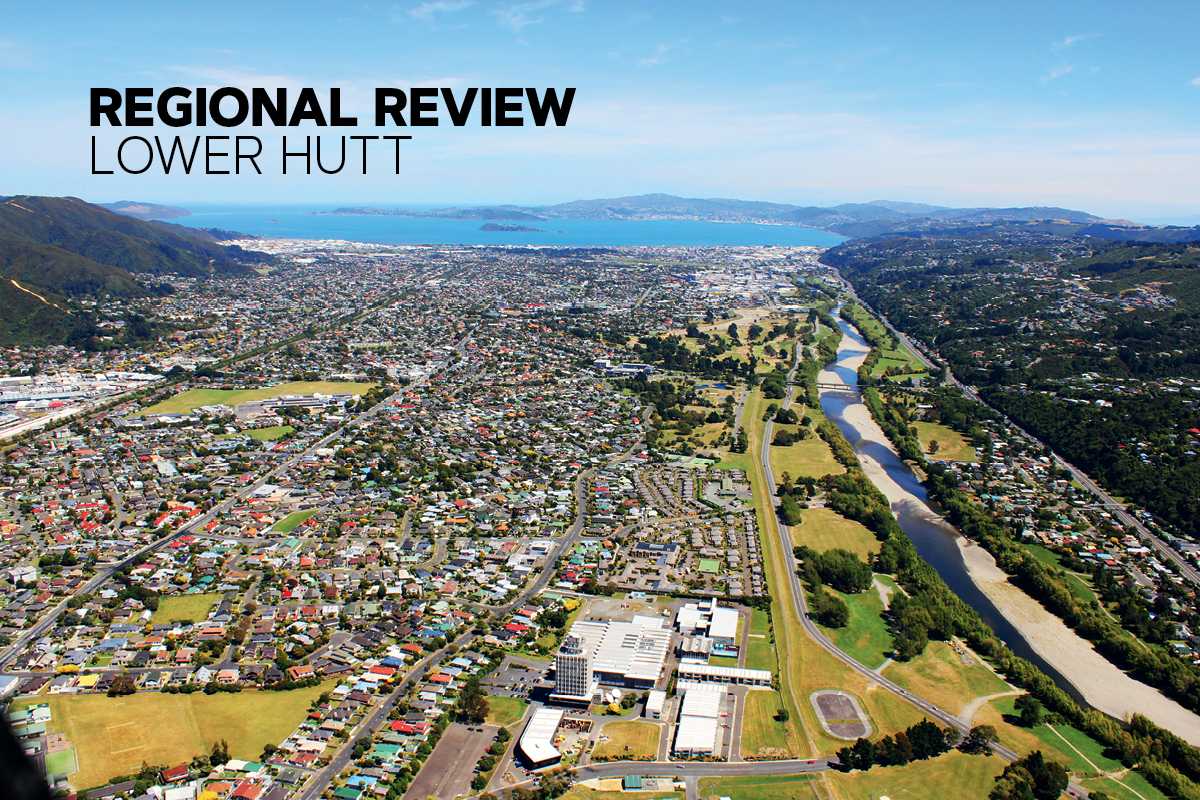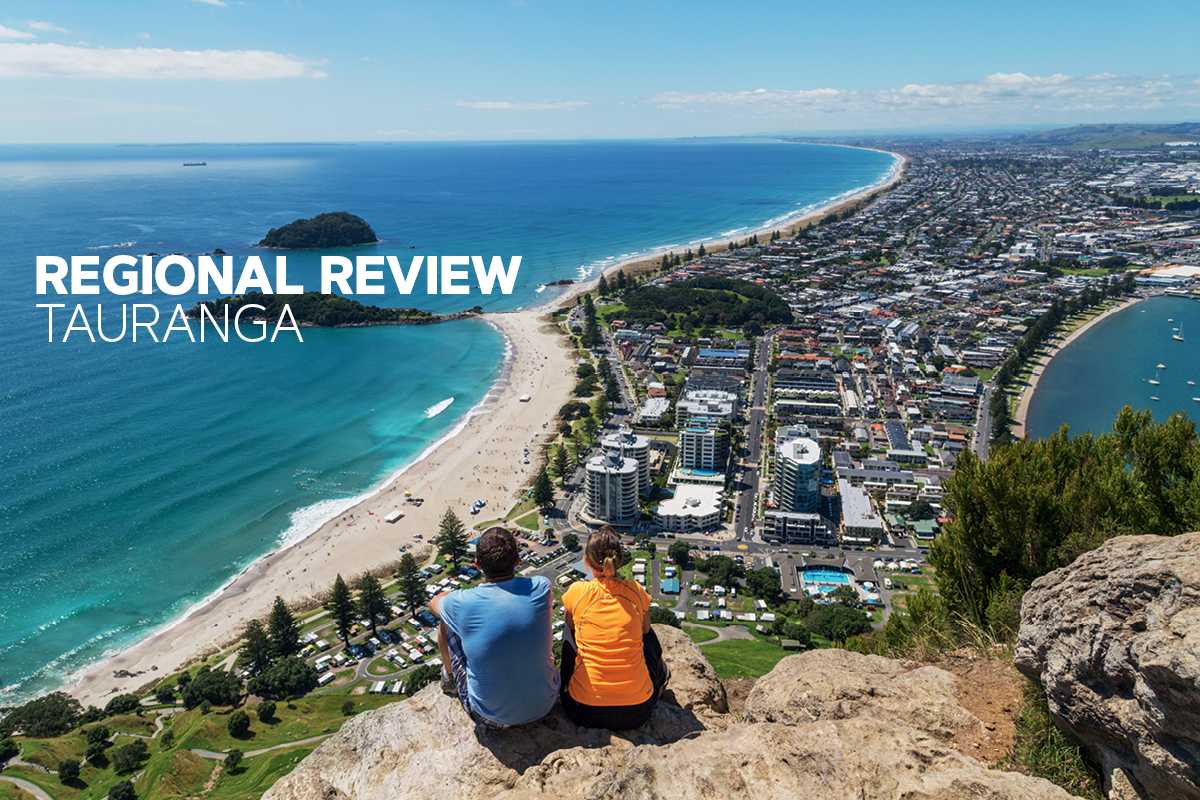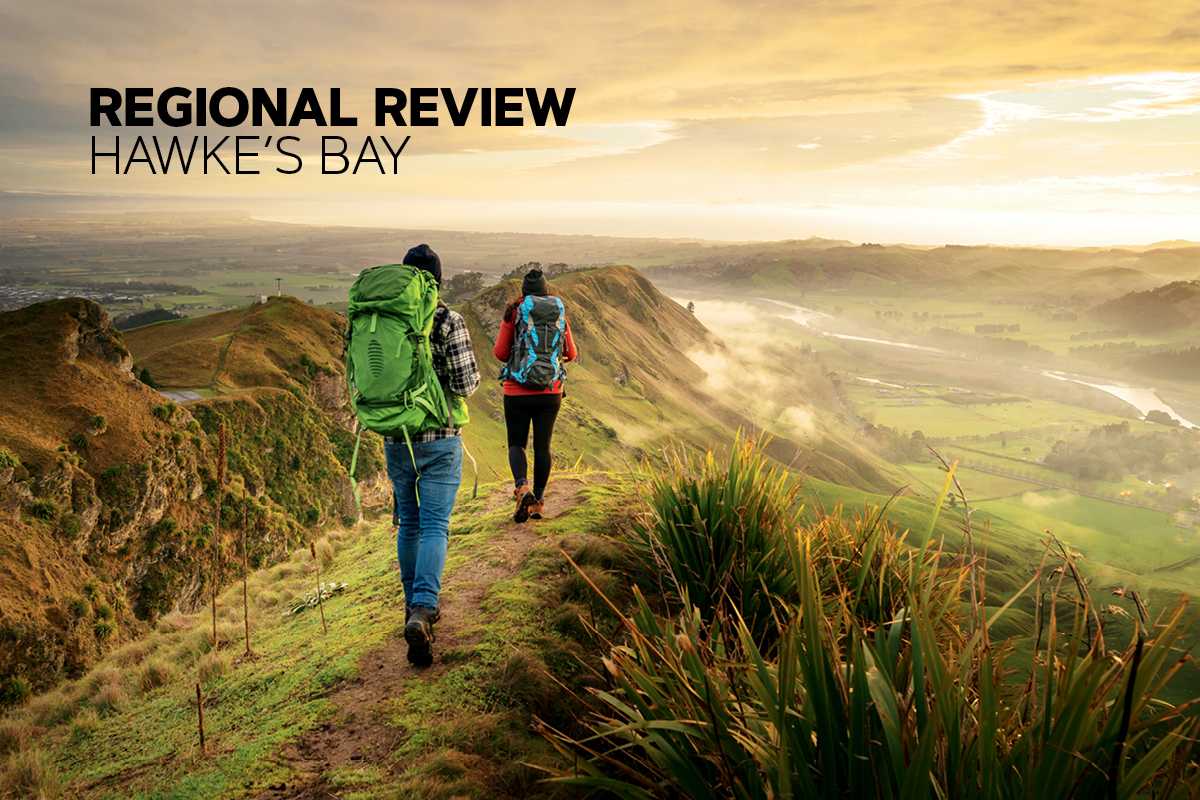
Let’s Raise A Glass To Hawke’s Bay
The bay is distinctive for its Art Deco architecture, magnificent landscapes, abundant wineries and balmy days giving the area an attractive, almost Mediterranean lifestyle, Sally Lindsay discovers.
25 February 2024
Hawke’s Bay is a beautiful district with much to offer those who love the great outdoors, food and wine.
Although Hawke’s Bay is small, it’s big in character. From the charming, unconventionally close towns of Napier and Hastings to high-end Havelock North, and the rows and rows of vineyards and fruit farms, Hawke’s Bay has all the attractions.
Napier is a seaside town on a shingle coastline, with access to sandy beaches from either direction. Napier Hill offers sea views over the bay and the port is also based in Napier, as is an eclectic choice of restaurants, shops and cafes.
Hastings is known as the “fruit bowl” of New Zealand and is home to a multitude of orchards, wineries and landscaped parks and gardens. The hospital and both Totara Health clinics are in Hastings.
Havelock North village sits at the base of Te Mata Peak, a steep landscape popular with mountain bikers, walkers and tourists who enjoy expansive views from the top. The village offers boutique shops and cafes and is close to many of Hawke’s Bay’s wineries.
The bay is famous for its wine. Along with fruit, grapes grow well in the area and have done so for a long time. Cabernets and merlots from the Gimblett Gravels area are particularly well known for their quality. In fact, they frequently outperform their French equivalents in official taste tests.
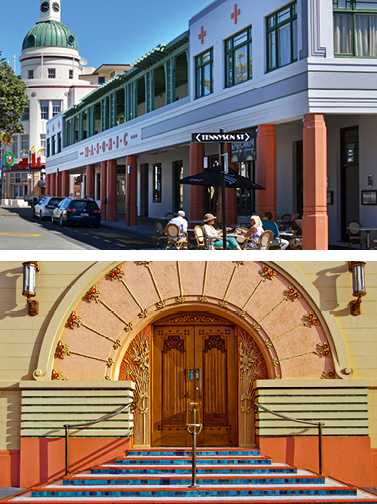
Napier is a stunning art deco centre.
Art Deco Vibe
Napier was built in a distinctive Art Deco style after the city was affected by an earthquake in 1931. Art Deco architecture was all the rage at the time, and it remains an important part of life here. The city is home to the Tremains Art Deco Weekend held every February.
Getting outdoors in Hawke’s Bay – whether it’s a walk up Te Mata Peak, an adrenaline-filled rafting trip down the Mohaka River, cycling some of the 200 kilometres of trails, or a lazy day at the beach – means locals and visitors never run out of options.
Sport and culture are well catered for with facilities including a recently remodelled Opera House, museums, art galleries and sports arenas. The region is also home to some of the country’s leading secondary schools.
Scenic attractions include the world’s largest onshore gannet colony (Cape Kidnappers). There are many excellent golf courses, and the region hosts several classic road cycle races.
In the property market, REINZ data shows Hawke’s Bay’s median prices dropped 1.1 per cent year-on-year in November to $680,000.
Across the region, CoreLogic’s data shows prices have fallen 11.2 per cent in Maraenui, Napier and risen 0.1 per cent in Flaxmere, Hastings. In Maraenui prices fell from $549,050 from to $487,600 over the year to December 1 followed by Bluff Hill, also in Napier, dropping 10.8 per cent from $1,107,750 to $987,650, and Napier South declining 10.4 per cent from $737,100 to $660,600.
At the other end of the scale, Flaxmere prices rose from $499,450 to $499,900. The only other area to rise was Raureka, where prices lifted from $635,800 to $636,100. Across the rest of Hastings prices fell from 2.6 per cent to 0.8 per cent.
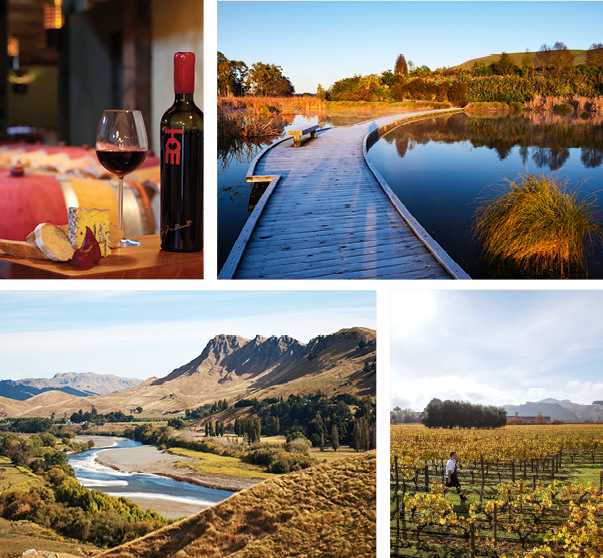
ABOVE, CLOCKWISE FROM TOP LEFT Church Road vineyard is a tourist drawcard; Pekapeka Regional Park is a beautiful wetland; a snapshot of Craggy Range vineyard; Tukituki Valley is located close to Havelock North and popular with tourists and those who love the outdoors.
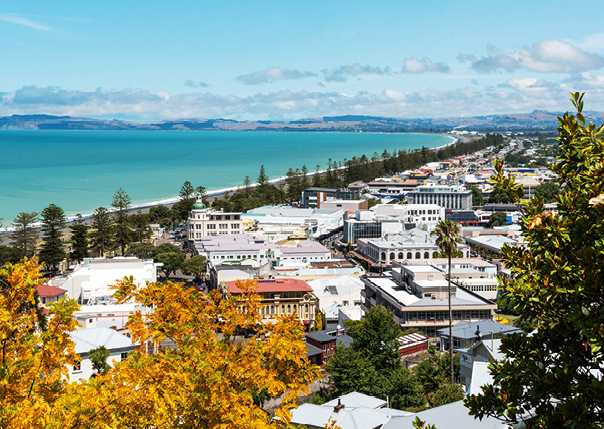
A view of dramatic Napier Beach.
INSURANCE PAYOUTS
Stuart Christensen, Tremains general manager for central Hawke’s Bay, says the region is still getting on its feet after Cyclone Gabrielle, which decimated the housing market for the first and second quarters of last year. “Those first two quarters had the worst statistics for 40 years,” he says.
“To be fair the cyclone hit the rural lifestyle market the hardest and most of the Napier/Hastings/Havelock North residential markets were unaffected apart from a few pockets.”
Those affected started being paid out by insurance companies towards the end of last year.
“There has definitely been some mileage in the market from people receiving their insurance payments and looking at what it means for them in the short to medium term. It’s having a positive effect, but there are definitely people still waiting to find out what’s happening with their homes as far as which category they are in and a potential buyout.”
During the latter part of last year first home buyers were the biggest buyers, although investors dipped their toes in the water again and have been sniffing around. “Competition between first home buyers and investors has heated up,” Christensen says.
“While the market is not anywhere near where it was three years ago, there is definitely confidence off the back of the election and the changes being made by the government – the reinstatement of interest deductibility and pulling the bright-line test back to two years.”
Agents are starting to see more multi-offers on properties. “It’s not fear of missing out but definitely people are going, ‘right, we want to buy’ and they’re having to compete, so that’s always a favourable sign.”
The bottom of the market has passed. Christensen suspects once investors fully come back into the market, they’ll compete against the first-home buyers and allow the next tier to move up and the tier after that to go into higher priced properties.
As the market changes, he says it comes as a surprise to many people. “They wake up one day and go ‘Oh, my goodness, it’s changed’ and suddenly want to buy and there is competition. The change can happen quite quickly.”
Investors are looking for low-to-medium priced houses in Hawke’s Bay. “It comes down to the return, but generally if an investor can pick up a property for $500,000 to $700,000, they are pretty happy. They generally steer clear of apartments as many are on leasehold land and together with body corp fees they become unaffordable.”
Christensen is confident there will be far more buyers this year and listings are up. They rose 10 per cent across the region over two months at the end of last year.
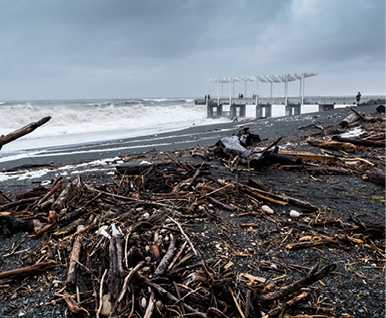
Cyclone Gabrielle caused major damage to the district when it hit in February 2023.
Rental Shortage
While buyers are becoming thicker on the ground, rental housing is becoming thinner, and tenants are desperate for a roof over their heads. Rentsmart property manager Ruth Shannon says typically there are only 80 rentals available on any day across the entire Hawke’s Bay region; three or four years ago there would have been hundreds.
“For the limited selection of properties now there would be 80-90 applications on any one property. Hawke’s Bay would be hundreds to a thousand short of private rentals,” she says.
Although there is development, Shannon says much of it is high-density social housing, which hard-working middle-income families do not qualify for. “They are having to battle for a house in the private rental pool. There is some private building also going on, but it is not going to touch the sides for the people who actually really need it.”
The dearth of private rental housing has made it difficult for property managers who have to give everyone who turns up to a viewing an equal chance to rent. “We are having to limit viewings to one only with staggered times, otherwise 200 people will turn up if we have three or four viewings. If people don’t make the first viewing they pretty much miss out,” Shannon says.
Properties are renting within one to two weeks.
New rentals are steadily being put through Rentsmart, but Shannon says it is not as thick and fast as it was a few years go. “There are homes available, but they are not necessarily coming through investors who are actively buying. It’s more owner-occupied homes where owners are moving out of the region for jobs, and they don’t want to sell. They are deciding to rent for a few years to see what might happen down the track.
“Investors are waiting to see what the new government does. They are also waiting for interest rates to come back down and for tax deductibility to kick in because it’s unaffordable for them to make things stack up.”
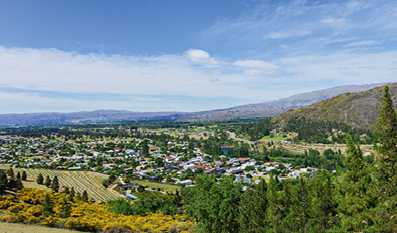
Havelock North provides great opportunities for renters who can afford it.
Because of the extreme shortage of properties, everywhere is popular to rent. For a low-end renter who can afford $550 to $600 a week, they tend to look at Flaxmere and Camberley because they can get more bang for their buck on a three to four-bedroom house.
Budget dictates where you can rent to a certain extent, Shannon says. For renters who have a $700 to $900 budget, Napier Hill, Frimley, Havelock North and Hastings are attractive. Most new builds are starting at $700 a week, rising to $800-$850 a week. “Hawke’s Bay renters need to earn a good income to afford the top areas.”
Strong Demand
Shannon says the region has a real shortage of one to two-bedroom properties. Singles or couples want that end of the market, but there’s a mixture of strong demand, including three-bedroom rentals. Some families are even trying to squeeze four to five people into a two-bedroom home just so they don’t have to pay as much rent.
Rents have risen in the past few years to match the big increases in house prices. Rent rises were also coupled by a supply shortage and huge demand. “A lot of the old-time investors, who bought 15 years ago and had been through a couple of property cycles, saw prices rise quickly and got out,” Shannon says.
That started before the cyclone happened and in the past year it’s been a holding pattern for the market waiting for government changes and cyclone rebuild decisions. “Many who were displaced are staying with friends and family until the right property comes up. Some are moving from rentals where the owners are selling up, moving back in themselves, or renovating.
“It’s a rapidly moving market, with a shrinking rental pool. Also, with the rising cost of living, petrol and utility costs, people are trying to stay closer to where they live and work.”
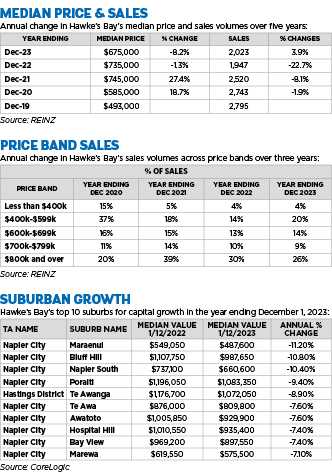
Corelogic Hawke’s Bay
Kelvin Davidson, Chief Property Economist
The Data
Rental data is sourced from the Ministry of Business, Innovation and Employment based on rental bonds lodged. This data is supplied grouped into geographic areas based on statistical area units used by Statistics NZ for the census and as a result do not always match well with common usage suburb names.
The rental data for each area is matched to property price information from our database to determine property prices and therefore yield. The yield is calculated as the annualised rental income divided by the median property value calculated using our E-Valuer.
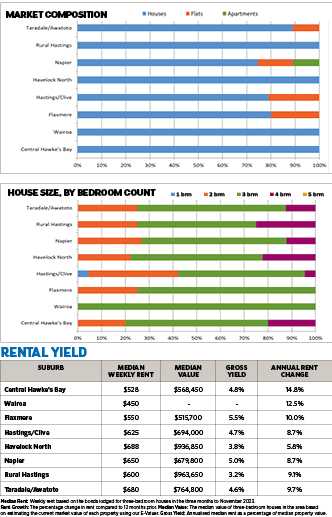
Market Composition
The rental market across Hawke’s Bay is dominated by houses. Of the 579 properties recently available on the market for rent, 486 have been houses (84 per cent), with 75 flats (13 per cent), and 18 apartments (3 per cent). All the apartments have been in Napier.
The largest markets for flats have been Hastings/Clive (36) and Napier (24), with a few in Taradale/Awatoto and Flaxmere. Flats accounted for 20-21 per cent of all properties recently available for rent in Hastings/Clive and Flaxmere.
Hastings/Clive (135) and Napier (124) have also been the largest markets for rental houses, although Havelock North and Central Hawke’s Bay have been important too. In four parts of Hawke’s Bay, houses have accounted for 100 per cent of the properties recently available for rent, including Wairoa and Rural Hastings (as well as Havelock North and Central Hawke’s Bay).
House Size
Looking specifically at the 486 houses recently for rent across Hawke’s Bay, none have had five bedrooms, and only six with one bedroom (all in Hastings/Clive).
In the four-bedroom bracket (12 per cent of all Hawke’s Bay houses recently for rent), the most have been in Napier (15) and Havelock North (12), although when you look at the four-bedroom share of all houses recently for rent, the highest figure is 25 per cent in Rural Hastings. No houses for rent in Flaxmere or Wairoa lately have had four bedrooms.
For two-bedroom properties (28 per cent of all houses recently for rent) most have been in Hastings/Clive (51) and Napier (33). The highest concentration rate was 38 per cent in Hastings/Clive, while Wairoa had no two-bedroom houses for rent.
And finally, for three-bedroom properties (59 per cent of all houses recently for rent) again Napier (75) and Hastings/Clive (72) are the largest areas, but there’s been a decent spread of these properties right across Hawke’s Bay, with the concentration rate highest in Wairoa (100 per cent), and all other areas in the range of 50-75 per cent.
Rent And Yield
By matching average value to rent we can look at gross yield for three-bedroom houses in each area.
Median weekly rents for three-bedroom houses across Hawke’s Bay range from $450 in Wairoa up to $680 in Taradale/Awatoto and $688 in Havelock North. There’s also quite a wide range for the median values on these properties too, from $515,700 in Flaxmere, up to more than $900,000 in Havelock North and Rural Hastings.
This results in quite different gross rental yields, from less than 4 per cent in Rural Hastings and Havelock North, up to 5 per cent or more in Napier and Flaxmere. Generally speaking, rental yields for three-bedroom houses across Hawke’s Bay are quite appealing by national standards, while rental growth has also been robust in the past year; at least 5 per cent everywhere, and more often closer to 10 per cent or above, including Taradale/Awatoto, Flaxmere, Wairoa and Central Hawke’s Bay.
